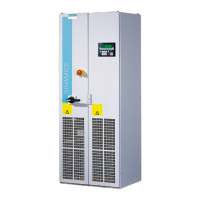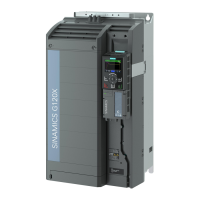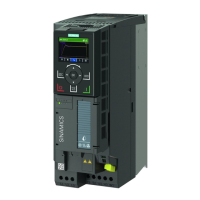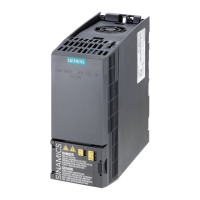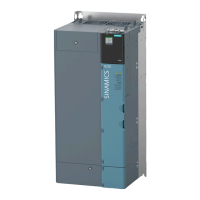8.29 Calculating the energy saving for uid ow machines
Overview
Fluid ow machines, which mechanically control the ow rate using valves or throttle aps,
operate with a constant speed corresponding to the line frequency.
/LQHVXSSO\
3XPS
/LQHVXSSO\
+]
+]
Figure 8-82 Flow control with pump and throttle connected to a 50 Hz line supply
The lower the ow rate, the poorer the eciency of the uid ow machine (pump). The uid
ow machine (pump) has the poorest eciency when the throttle or valve is completely closed.
Further, undesirable eects can occur, for example the formation of vapor bubbles in liquids
(cavitation) or the temperature of the medium being pumped can increase.
The converter controls the ow rate by appropriately varying the speed of the uid ow
machine. By controlling the ow rate, the uid ow machine operates at the optimum
eciency for each ow rate. This situation means that in the partial load range less electric
power is required than when controlling the ow rate using valves and throttles.
/LQHVXSSO\
,QYHUWHU
/LQHVXSSO\
,QYHUWHU
+]
+]
Figure 8-83 Flow control with pump and converter
Function description
)ORZUDWHFRQWUROXVLQJ
DWKURWWOHIODS
5HTXLUHG
HOHFWULF
SRZHU
)ORZUDWH
(QHUJ\VDYLQJ
&RQWUROOLQJWKHIORZUDWH
XVLQJDQLQYHUWHU
The converter calculates the en‐
ergy saving from the ow charac‐
teristic associated with a mechan‐
ical ow control and the meas‐
ured electric power that is drawn.
The calculation is suitable for cen‐
trifugal pumps, fans, radial and
axial compressors, for instance.
Advanced commissioning
8.29 Calculating the energy saving for uid ow machines
Distributed converter for SIMOGEAR geared motors
340 Operating Instructions, 10/2020, FW V4.7 SP13, A5E31298649B AL

